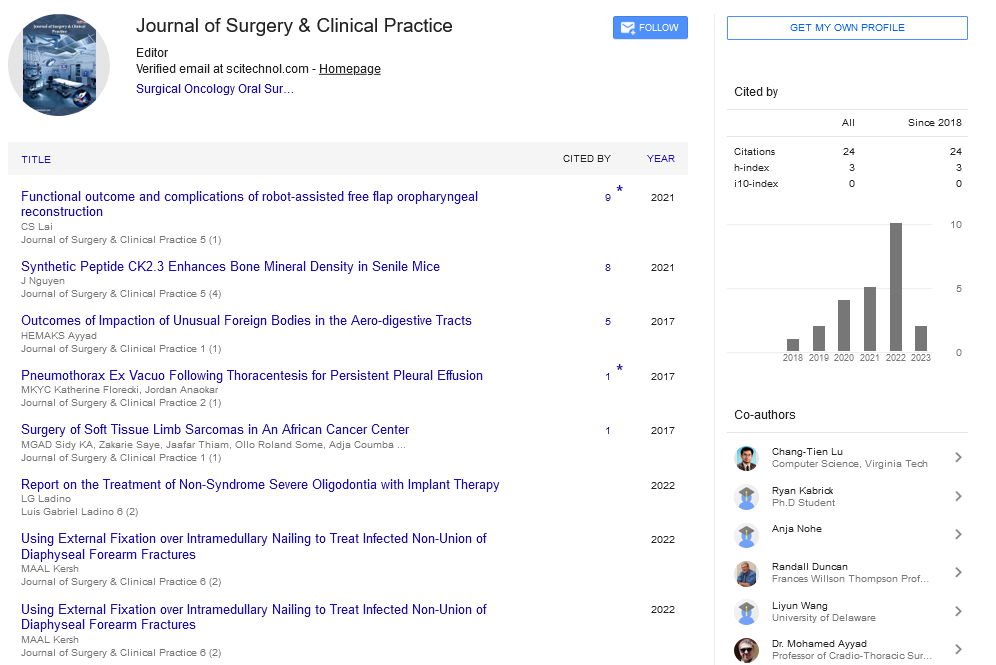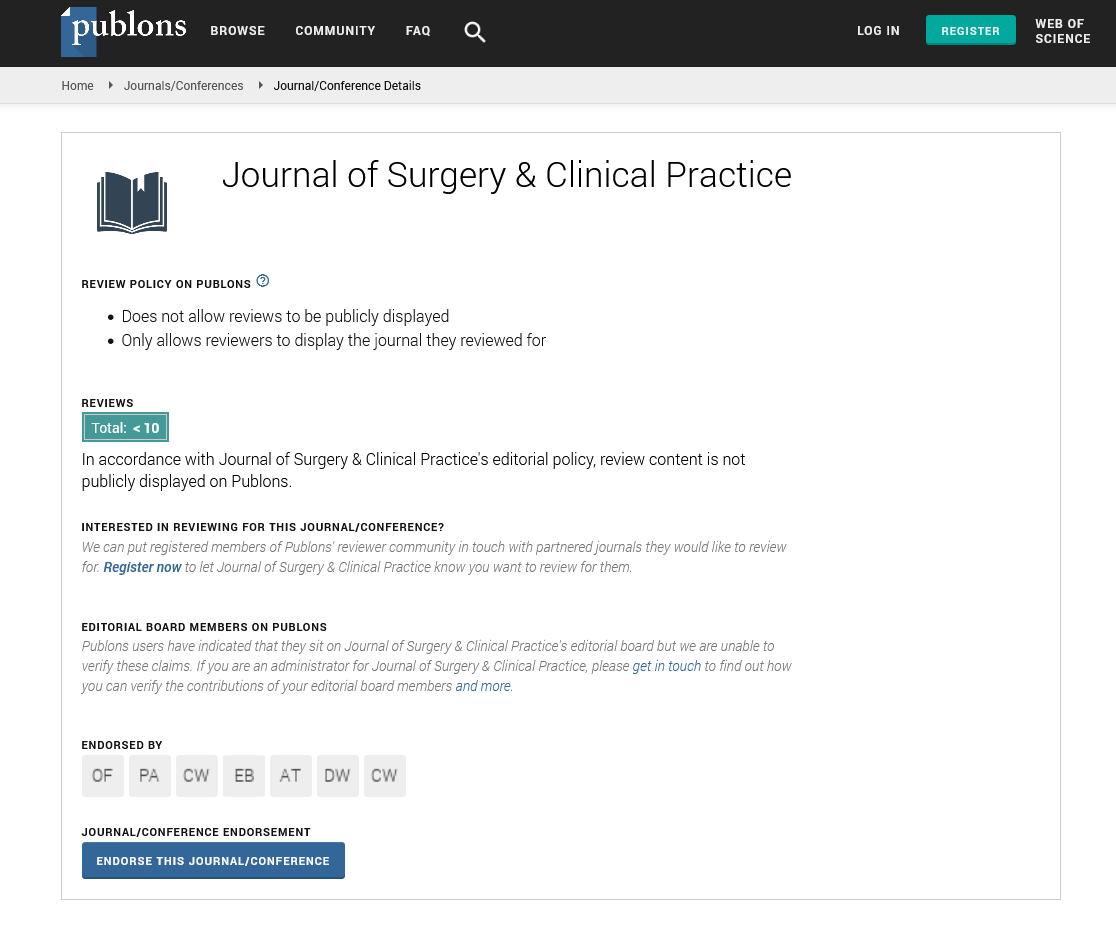Perspective, J Surg Clin Prac Vol: 7 Issue: 2
Importance of Varicocelectomy and Vasectomy Reversal Surgery in Reducing Male Infertility
Michele Massimino*
Department of Surgery, University of Catania, Catania, Italy
*Corresponding Author: Michele Massimino
Department of Surgery, University
of Catania, Catania, Italy
E-mail: massimino@unict.it
Received date: 23 May, 2023, Manuscript No. JSCP-23-107209;
Editor assigned date: 26 May, 2023, PreQC No. JSCP-23-107209 (PQ);
Reviewed date: 12 June, 2023, QC No. JSCP-23-107209;
Revised date: 19 June, 2023, Manuscript No. JSCP-23-107209 (R);
Published date: 26 June, 2023 DOI: 10.35248/JSCP.23.7.100377.
Citation: Massimino M (2023) Importance of Varicocelectomy and Vasectomy Reversal Surgery in Reducing Male Infertility. J Surg Clin Prac 7:2.
Description
Male infertility is a prevalent issue affecting couples worldwide, with various factors contributing to reduced fertility potential. Surgical interventions play an important role in male infertility. Commonly performed procedures for male infertility includes varicocelectomy and vasectomy reversal. This procedure includes making changes in varicoceles, dilated veins in the scrotum that can impair sperm production and quality. Vasectomy reversal is used to restore fertility by reconnecting the vas deferens after a previous vasectomy.
Varicoceles are among the most common surgically correctable cause of male infertility. These enlarged veins in the scrotum can lead to increased scrotal temperature, hormonal imbalances, and impaired sperm production and quality. This is a surgical procedure that involves ligating or removing the affected veins, thus improving blood flow and reducing scrotal temperature. This surgery can be performed through various approaches, including open surgery, laparoscopy, or microsurgery. During this process, the surgeon identifies and ligates or divides the dilated veins, rerouting blood flow to healthier veins. This procedure aims to restore normal testicular temperature, improve sperm production, and enhance overall fertility potential. Studies have shown that varicocelectomy can lead to improved sperm parameters and increased pregnancy rates for couples attempting to conceive. It is particularly effective in cases where varicoceles are the primary cause of male infertility.
It is important to note that varicocelectomy is not suitable for all cases of male infertility. A thorough evaluation of the couple's fertility status, including semen analysis and other diagnostic tests is essential to determine if varicoceles are contributing to infertility. The success of this procedure may also depend on factors such as the severity of the varicoceles, the age of the male partner, and the overall fertility status of the female partner.
Vasectomy is a common contraceptive procedure that involves the surgical cutting or blocking of the vas deferens, the tube that carries sperm from the testicles. However, in some cases, individuals may decide to reverse their vasectomy due to changes in their reproductive desires. Vasectomy reversal, also known as vasovasostomy used to restore the continuity of the vas deferens, allowing sperm to flow again during ejaculation. This reversal surgery involves microsurgical techniques to meticulously reconnect the severed ends of the vas deferens. The procedure requires skilled expertise, as the vas deferens has a delicate structure. The success of vasectomy reversal depends on factors such as the length of time since the vasectomy, the presence of any scar tissue, and the overall fertility status of the couple. Success rates vary but can be as high as 90% for recent vasectomies and decrease slightly for longer intervals since the initial procedure.
Following a successful vasectomy reversal, sperm may gradually reappear in the semen, but it may take several months for sperm counts to reach optimal levels for conception. It is important for couples to understand that pregnancy rates after vasectomy reversal can vary and depend on various factors beyond the surgical procedure itself. These procedures provide hope and opportunities for couples to achieve their dreams of starting or expanding a family. However, it is important for individuals and couples to consult with fertility specialists and undergo thorough evaluations to determine the most suitable surgical intervention for their specific circumstances. With advancements in surgical techniques and ongoing research, the field of male infertility continues to evolve, providing new possibilities for couples on their journey towards parenthood.
 Spanish
Spanish  Chinese
Chinese  Russian
Russian  German
German  French
French  Japanese
Japanese  Portuguese
Portuguese  Hindi
Hindi 
